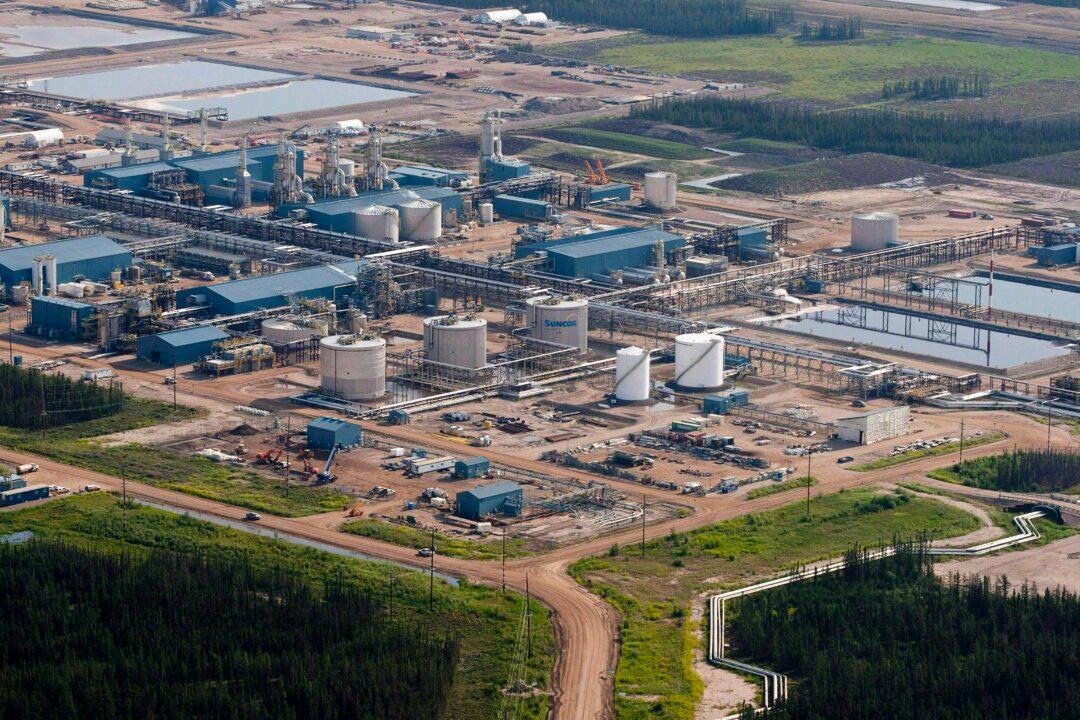The price of oil plunged again earlier this week with its implications being widely seen in Alberta, putting pressure on policymakers to determine what actions, if any, need to be taken.
“Lower oil prices are likely, on the whole, to be bad for Canada,” said Bank of Canada deputy governor Timothy Lane in a speech given to the Madison International Trade Association in Madison, Wisconsin, on Jan. 13.
The past few days have brought to the fore some of the implications of the falling price of oil, which settled below $50 per barrel for the first time in six years on Monday, Jan. 12.
The Conference Board of Canada said on Jan. 13 that a recession is the most likely scenario for Alberta. Some economic weakness can be seen through macroeconomic channels already.
A $1.5 billion budget surplus in October has turned into a deficit of $500 million in January. According to the Teranet-National Bank House Price Index released Jan. 14, prices in Calgary fell 1.1 percent in December. Calgary is turning into a buyer’s market with listings rising and sales falling. Although Alberta’s month-over-month unemployment rate rose 0.2 percentage points to 4.7 percent in December, it is still well below the national rate of 6.6 percent.
According to Toronto Dominion Bank, the federal government will be in a deficit two years longer than planned due to the drop in oil prices. Back in November, in its fall fiscal update, the government said it was on track to achieve a $1.9 billion surplus in 2015-16. That was when oil was trading around $80 per barrel. With the falling oil prices, the government could wind up dipping into its $3 billion contingency fund. Finance minister Joe Oliver reiterated the government’s commitment to balance the budget when he spoke to reporters in Vancouver on Wednesday.
Crude oil accounts for about 14 percent of exports and oil extraction accounts for about 3 percent of GDP.
The oil companies aren’t wasting time making adjustments. The largest company in Canada’s oil patch, Suncor, announced on Jan. 13 that it is cutting $1 billion in capital expenditures and also about 1,000 jobs. On Jan. 9, Royal Dutch Shell’s Canadian unit said it would cut up to 10 percent of its work force in the oil patch.
Supply Not Going Away
The hit to the price of oil began this week with a Goldman Sachs report that shaved its forecast for West Texas Intermediate. The investment bank sees prices of $40.50 per barrel in three months, $44 per barrel in six months, and $65 per barrel in 12 months. These new forecasts are down by $30, $30, and $15 per barrel respectively.
Shale oil production can be increased and decreased much more quickly than before. The time lag is lower between when capital is spent and when production rises. Lower prices need to remain in place in order to keep shale capital investments on the sideline.
On Jan. 13, the United Arab Emirates energy minister reiterated the position of the Organization of the Petroleum Exporting Countries (OPEC) Arab Gulf members that lowering their production would only hurt their market share and benefit rivals. Their important decision to maintain output at 30 million barrels per day from November looms as a major factor in the increased supply (and price plunge) along with an excess supply from Libya and Iraq.





